Gary Null
See book keywords and concepts |
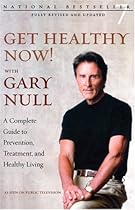 Soybeans and foods made from soy, in particular, contain isoflavones that discourage tumor growth. Foods made from soy include tofu, fortified soy milk, miso, and tempeh. A variety of other beans can be used to make wonderful ethnic dishes and include black beans, adzuki, pinto beans, chickpeas, mung beans, lentils, and lima beans. Grains and beans are your best source of proteins.
"If you eat meat, I recommend eating only small quantities of it, no more than 3 ounces per day. Three ounces fits into the palm of your hand. Soybeans and foods made from soy, in particular, contain isoflavones that discourage tumor growth. Foods made from soy include tofu, fortified soy milk, miso, and tempeh. A variety of other beans can be used to make wonderful ethnic dishes and include black beans, adzuki, pinto beans, chickpeas, mung beans, lentils, and lima beans. Grains and beans are your best source of proteins.
"If you eat meat, I recommend eating only small quantities of it, no more than 3 ounces per day. Three ounces fits into the palm of your hand. |
| They include:
Soybeans, soy products, and lima beans. isoflavones and phytoestrogens found in soybeans, soy products, and lima beans protect against cancer. The low incidence of breast cancer among Japanese women is largely attributed to the widespread use of soybeans.
Flax. The omega-3 fatty acids in flax seeds and oil protects against breast cancer.
Fish. Fish high in omega-3 include salmon, tuna, sardines, mackerel, and herring.
Cruciferous vegetables. Vegetables such as broccoli, cauliflower, and brussels sprouts contain cancer-fighting substances.
Mushrooms. |
Earl Mindell
See book keywords and concepts |
 As an antioxidant, cancer-fighting supplement, one soy protein shake daily or two soy concentrate tablets (containing genistein and other isoflavones) is recommended. Daidzein is also the isoflavone in the oriental herb kudzu (Pueraria lobata) that has been shown to help prevent hangovers and reduce the desire for alcohol. Kudzu supplements are available in capsules. If you'd like help getting "on the wagon"—or getting over the night before—my recommendation is three 500 mg. capsules daily before or after drinking alcohol.
106. As an antioxidant, cancer-fighting supplement, one soy protein shake daily or two soy concentrate tablets (containing genistein and other isoflavones) is recommended. Daidzein is also the isoflavone in the oriental herb kudzu (Pueraria lobata) that has been shown to help prevent hangovers and reduce the desire for alcohol. Kudzu supplements are available in capsules. If you'd like help getting "on the wagon"—or getting over the night before—my recommendation is three 500 mg. capsules daily before or after drinking alcohol.
106. |
| Soy is high in fiber and rich in phytoestrogens, particularly the two important isoflavones, genistein and daidzein. (See section 105.) It is also one of the few plant foods that is a complete protein containing the proper balance of the eight essential amino acids. (See section 72.) The U.S. government recognizes it as a protein alternative equivalent to meat, and, according to the American Journal of Clinical Nutrition, "except for premature infants, soy protein can serve as a sole protein source in the human body. |
| Soybeans are rich in plant estrogens called isoflavones. They can alleviate some of the symptoms of perimenopause that often interfere with sexual desire. You might also want to have your DHEA levels checked. If they're low, 25 mg. of supplemental DHEA daily could elevate your libido. Additionally, I'd suggest you try the herb damiana, which has the reputation of being a sexual stimulant. Take one capsule 1-3 times daily before meals. Add a little candlelight to the evening and you may be pleasantly surprised with the results.
What is Spanishfly and is it really a natural aphrodisiac? |
Schuyler W. Lininger, Jr. DC
See book keywords and concepts |
 One system breaks bioflavonoids into isoflavones, anthocyanins, flavans, flavonols, flavones, and flavanones.1 Some of the best-known bioflavonoids, such as genistein in soy (p. 332) and quercetin (p. 328) in onions, can be considered subcategories of the categories. Although they are all structurally related, their functions are different.
While they are not considered essential, some bioflavonoids do support health as anti-inflammatory, antihistaminic, and antiviral agents. One system breaks bioflavonoids into isoflavones, anthocyanins, flavans, flavonols, flavones, and flavanones.1 Some of the best-known bioflavonoids, such as genistein in soy (p. 332) and quercetin (p. 328) in onions, can be considered subcategories of the categories. Although they are all structurally related, their functions are different.
While they are not considered essential, some bioflavonoids do support health as anti-inflammatory, antihistaminic, and antiviral agents. |
| Soy protein and isoflavones: Their effects on blood lipids and bone density in postmenopausal women. Am J Clin Nutr 1998; 68(suppl): 1375S-79S.
23. Head KA. Ipriflavone: an important bone-building isoflavone. Altern Med Rev 1999; 4: 10-22 [review].
24. Prior JC. Progesterone as a bone-trophic hormone. Endocr Rev 1990; 11: 386-98.
25. Lee JR. Osteoporosis reversal: the role of progesterone. Int Clin Nutr Rev 1990; 10: 384-91.
26. Riis BJ, Thomsen K, Strom V, Christiansen C. The effect of percutaneous estradiol and natural progesterone on postmenopausal bone loss. |
| Biological effects of a diet of soy protein rich in isoflavones on the menstrual cycle of premenopausal women. Am J Clin Nutr 1994; 60: 333-40.
3. Knight DC, Eden JA. A review of the clinical effects of phytoestrogens. Obstet Gynecol 1996; 87: 897-904 [review].
4. Albertazzi P, Pansini F, Bonaccorsi G, et al. The effect of dietary soy supplementation on hot flushes. Obstet Gynecol 1998; 91: 6-11.
5. Murkies AL, Lombard C, Strauss BJ, et al. Dietary flour supplementation decreases post-menopausal hot flushes: effect of soy and wheat. Maturitas 1995; 21: 189-95.
6. |
| Taking 40 grams of soy protein powder containing 90 mg isoflavones increased bone mineral density of the spine according to a double-blind trial.11 Although the use of soy in the prevention of osteoporosis looks hopeful, knowing to what extent soy reduces bone loss will require further research.
Where Is It Found?
In addition to whole soybeans, foods derived from soy include tofu, tempeh, soy milk, textured and hydrolyzed vegetable protein, meat substitutes, soy flour, miso, and soy sauce. Soy is also available as a supplement, as soy protein or isoflavone in powder, capsule, or tablet form. |
| Supplements containing isoflavones extracted from soy are commercially available, and flaxseed (as opposed to flaxseed oil) is also a good source of phytoestrogens.
Although natural progesterone (p. 326) has been anecdotally linked to reduction in symptoms of menopause,7,8'' clinical research has not yet supported the use of natural progesterone for this purpose. In one trial, natural progesterone was found to have no independent effect on symptoms, and synthetic progestins were found to increase breast tenderness. |
Christian Ratsch
See book keywords and concepts |
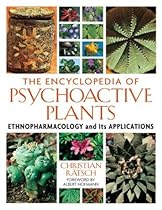 Erysenegalenseine H and I: Two new isoflavones from Erythrina senegalensis. Planta Medica 60:178-80.
Erythrina spp.
The seeds of many species of Erythrina are known as colorines and are used for magical as well as ethnopharmacological purposes (see the table at left). The ethnographic literature makes frequent mention of species that certainly were not compared to herbarium specimens and whose botanically identity may thus be incorrect. For this reason, it is not possible to provide a precise classification. Erysenegalenseine H and I: Two new isoflavones from Erythrina senegalensis. Planta Medica 60:178-80.
Erythrina spp.
The seeds of many species of Erythrina are known as colorines and are used for magical as well as ethnopharmacological purposes (see the table at left). The ethnographic literature makes frequent mention of species that certainly were not compared to herbarium specimens and whose botanically identity may thus be incorrect. For this reason, it is not possible to provide a precise classification. |
Nicola Reavley
See book keywords and concepts |
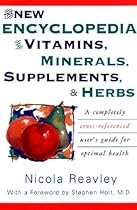 Soy
Soy contains types of flavonoid compounds known as isoflavones. These are also referred to as phytoestrogens because they have both estrogenic and antiestrogenic properties. When circulating levels of estrogens are high, such as in premenopausal women, these compounds can bind to estrogen receptors and block action of the hormone. When estrogen levels are low, such as in postmenopausal women, phytoestrogens act estrogenically. Phytoestrogen compounds in soy include genistein and daidzein. Soy
Soy contains types of flavonoid compounds known as isoflavones. These are also referred to as phytoestrogens because they have both estrogenic and antiestrogenic properties. When circulating levels of estrogens are high, such as in premenopausal women, these compounds can bind to estrogen receptors and block action of the hormone. When estrogen levels are low, such as in postmenopausal women, phytoestrogens act estrogenically. Phytoestrogen compounds in soy include genistein and daidzein. |
Andrew Chevallier
See book keywords and concepts |
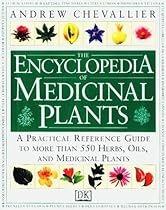 Jamaica dogwood contains isoflavones (including lisetin, jamaicin, and icthyone), organic acids (such as piscidic acid), beta-sitosterol, and tannins. History & Folklore The pounded bark and twigs have been used by Native Caribs and Afro-Caribbeans to stupefy fish. Medicinal Actions & Uses Jamaica dogwood is a useful and undervalued remedy that acts as a sedative and painkiller. It is chiefly employed in the treatment of insomnia and overexcitability, since it calms mental activity. It is also prescribed for nerve pain, toothache, and menstrual pain. Jamaica dogwood contains isoflavones (including lisetin, jamaicin, and icthyone), organic acids (such as piscidic acid), beta-sitosterol, and tannins. History & Folklore The pounded bark and twigs have been used by Native Caribs and Afro-Caribbeans to stupefy fish. Medicinal Actions & Uses Jamaica dogwood is a useful and undervalued remedy that acts as a sedative and painkiller. It is chiefly employed in the treatment of insomnia and overexcitability, since it calms mental activity. It is also prescribed for nerve pain, toothache, and menstrual pain. |
Earl Mindell
See book keywords and concepts |
 Nutraceuticals are derived from natural products (food substances or parts of a food) that have proven therapeutic benefits similar to pharmaceuticals—such as isoflavones from soy which have anticancerous properties and hypericum and polyphenols in Saint John's wort which has antidepressant properties. These naturally occurring compounds extracted from plants, algae, and other biological sources are concentrated into pills, powders, and capsules and are now being used to prevent numerous diseases as well as to treat common ailments—an area formerly ruled by prescription drugs. Nutraceuticals are derived from natural products (food substances or parts of a food) that have proven therapeutic benefits similar to pharmaceuticals—such as isoflavones from soy which have anticancerous properties and hypericum and polyphenols in Saint John's wort which has antidepressant properties. These naturally occurring compounds extracted from plants, algae, and other biological sources are concentrated into pills, powders, and capsules and are now being used to prevent numerous diseases as well as to treat common ailments—an area formerly ruled by prescription drugs. |
Mark Stengler, N.D.
See book keywords and concepts |
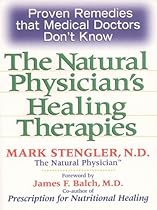 The phytonutrients known as isoflavones are found in soy, and seem to have a great number of health benefits. The carotenoids found in yellow-orange fruits and vegetables such as carrots and squash also have a great reputation, because they seem to help prevent cancer and heart disease.
Many phytonutrients have potent antioxidant activity, even exceeding the well-known antioxidant properties of such vitamins as E and C. In fact, the phytonutrients known as polyphenols, which are found in green and black teas, are some of the most potent antioxidants known. The phytonutrients known as isoflavones are found in soy, and seem to have a great number of health benefits. The carotenoids found in yellow-orange fruits and vegetables such as carrots and squash also have a great reputation, because they seem to help prevent cancer and heart disease.
Many phytonutrients have potent antioxidant activity, even exceeding the well-known antioxidant properties of such vitamins as E and C. In fact, the phytonutrients known as polyphenols, which are found in green and black teas, are some of the most potent antioxidants known. |
Andrew Chevallier
See book keywords and concepts |
 Key Constituents
¦ Triterpene glycosides (actein, cimicifugoside)
¦ isoflavones (formononetin)
¦ Isoferulic acid
¦ Salicylic acid
¦ Tannins
¦ Resin
Key Actions
¦ Promotes menstrual flow
¦ Antirheumatic
¦ Expectorant
¦ Sedative
Research
¦ Menopause herb Research has confirmed the validity of traditional knowledge. The results of a German trial, published in 1995, revealed that black cohosh in combination with St. John's wort (Hypericum perforatum, p. 104) was 78% effective at treating hot flashes and other menopausal problems. Key Constituents
¦ Triterpene glycosides (actein, cimicifugoside)
¦ isoflavones (formononetin)
¦ Isoferulic acid
¦ Salicylic acid
¦ Tannins
¦ Resin
Key Actions
¦ Promotes menstrual flow
¦ Antirheumatic
¦ Expectorant
¦ Sedative
Research
¦ Menopause herb Research has confirmed the validity of traditional knowledge. The results of a German trial, published in 1995, revealed that black cohosh in combination with St. John's wort (Hypericum perforatum, p. 104) was 78% effective at treating hot flashes and other menopausal problems. |
| Sparteine reduces the heart rate, and the isoflavones are estrogenic. History & Folklore Both the common and species names of this plant indicate its usefulness as a sweeper (scopa means "broom" in Latin). Broom's medicinal value is not mentioned in classical writings, but it does appear in medieval herbals. The 12th-century Physicians of Myddfai recommended broom as a means to treat suppressed urine: "Seek broom seed, and grind into fine powder, mix with drink and let it be drank. Do this till you are quite well. |
Mark Stengler, N.D.
See book keywords and concepts |
 Soy protein and isoflavones: Their effects on blood lipids and bone density in postmenopausal women. American Journal of Clinical Nutrition 1998; 68T375S-1379S.
SPIRULINA
• "... One type of spirulina known as Spirulina platensis was shown to inhibit the HIV virus (HIV-1) in a test-tube study." Ayehunie S, Belay A, Hu Y, Baba T, Ruprecht R, Inhibition of HIV-1 replication by an aqueous extract of Spirulina platensis (Arthrospira platensis). Seventh IAAA Conference, Knysna, South Africa, April 17,1996.
• "... Soy protein and isoflavones: Their effects on blood lipids and bone density in postmenopausal women. American Journal of Clinical Nutrition 1998; 68T375S-1379S.
SPIRULINA
• "... One type of spirulina known as Spirulina platensis was shown to inhibit the HIV virus (HIV-1) in a test-tube study." Ayehunie S, Belay A, Hu Y, Baba T, Ruprecht R, Inhibition of HIV-1 replication by an aqueous extract of Spirulina platensis (Arthrospira platensis). Seventh IAAA Conference, Knysna, South Africa, April 17,1996.
• "... |
| In one study, women were given 160 milligrams of isoflavones daily for three months. They experienced a significant reduction in their menopausal hot flashes and other menopausal symptoms.
°^ Osteoporosis
One study of postmenopausal women found that soy protein with high isoflavone content improved bone mineral density in the lumbar spine. Also, soy is a protein source that does not lead to urinary calcium excretion, as does protein from animal foods.
Spirulina
The longer I practice natural medicine, the more I am impressed with the visible benefits of some specific nutritional supplements. |
| People in Japan often consume an average of 200 milligrams of isoflavones daily as compared with the 1 to 3 milligrams Americans consume. Interestingly, in the populations of people who have moved from Japan to the U.S., rates of cancer and prostate cancer have soared toward the same levels as Americans who have been raised on the classic Western diet comprised of many high-fat foods and fewer plant foods. Clearly, there is a strong dietary connection.
Many epidemiological studies suggest that soy as a food has a cancer-prevention effect. |
| There is speculation that the isoflavones in soy formula for infants and children may be a problem, but the American Academy of Pediatrics still endorses use of the formula. More research will be needed to determine what problems, if any, the formula may cause. Moderate intake appears to be fine.
SOY
Recommendations from the Natural Physician for ...
°^ Cancer
Many researchers feel that soy as a food works wonders to prevent many different forms of cancer. The death rate among women in China who have breast cancer is one-fifth what it is in the United States. |
| There are other healthful components in soy, but we know that isoflavones are important active substances, so you want to make sure they're included in whatever soy product you're buying.
WHAT ARE THE SIDE EFFECTS?
Some people have a sensitivity reaction to soy, which can cause digestive upset. For some people, the side effect is preventable, as long as they take digestive enzymes before eating a meal that has soy in it—or even during the meal.
I have found that some children's eczema and reoccurring ear infections are brought on or worsened by soy products. |
Michael Castleman
See book keywords and concepts |
 But unlike hormonal estrogen, isoflavones and phytosterols do not spur the growth of breast tumors. When the soy chemicals bind to estrogen receptors, they prevent hormonal estrogen from doing so, which in turn prevents tumor growth. (Tamoxifen, a drug widely used to prevent breast cancer recurrences, works in a similar fashion.)
Soy foods' marked influence on estrogen metabolism was demonstrated by Kenneth Setchell, Ph.D., professor of pediatrics at Children's Hospital Medical Center in Cincinnati. Dr. But unlike hormonal estrogen, isoflavones and phytosterols do not spur the growth of breast tumors. When the soy chemicals bind to estrogen receptors, they prevent hormonal estrogen from doing so, which in turn prevents tumor growth. (Tamoxifen, a drug widely used to prevent breast cancer recurrences, works in a similar fashion.)
Soy foods' marked influence on estrogen metabolism was demonstrated by Kenneth Setchell, Ph.D., professor of pediatrics at Children's Hospital Medical Center in Cincinnati. Dr. |
Rebecca Wood
See book keywords and concepts |
 Although other plants contain isoflavones, none contain as rich a supply as soybeans do. In addition, soybeans dramatically lower the undesirable low-density lipoprotein blood cholesterol while raising the desirable high-density lipoprotein level.
The soybean is a good source of easily absorbed iron and is therefore especially beneficial to young children and people with iron-deficiency anemia. In addition to iron, soybeans also contain carotene, vitamins B-! and B2, and niacin. Although other plants contain isoflavones, none contain as rich a supply as soybeans do. In addition, soybeans dramatically lower the undesirable low-density lipoprotein blood cholesterol while raising the desirable high-density lipoprotein level.
The soybean is a good source of easily absorbed iron and is therefore especially beneficial to young children and people with iron-deficiency anemia. In addition to iron, soybeans also contain carotene, vitamins B-! and B2, and niacin. |
Earl Mindell, R.Ph., Ph.D.
See book keywords and concepts |
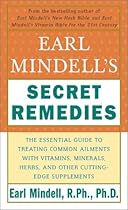 Earl's Rx
Soy: Take one scoop of soy powdered beverage (be sure it contains isoflavones, genistein, and daidzen) and blend into 8 ounces of low-fat or no-fat soy milk. (Vanilla flavored is my favorite!) Add a few ice cubes and mix in blender. Drink daily as a meal or between-meals snack.
Antioxidant formula for prostate health: All men should take a good antioxidant formula designed specifically for prostate health. There are several excellent combination formulas sold at natural food stores. Select one that includes genistein, daidzein, lycopene, and lutein. Earl's Rx
Soy: Take one scoop of soy powdered beverage (be sure it contains isoflavones, genistein, and daidzen) and blend into 8 ounces of low-fat or no-fat soy milk. (Vanilla flavored is my favorite!) Add a few ice cubes and mix in blender. Drink daily as a meal or between-meals snack.
Antioxidant formula for prostate health: All men should take a good antioxidant formula designed specifically for prostate health. There are several excellent combination formulas sold at natural food stores. Select one that includes genistein, daidzein, lycopene, and lutein. |
Sheldon Saul Hendler and David Rorvik
See book keywords and concepts |
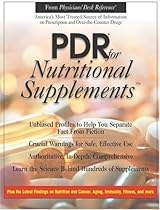 Daidzein glycosides are the second most abundant isoflavones in soybeans and soy foods; genistein glycosides are the most abundant. Nonfermented soy foods, such as tofu, contain daidzein, principally in its glycoside forms. Fermented soy foods, such as tempeh and miso, contain significant levels of the aglycone.
Daidzein and daidzin are also found in Radix puerariae (RP). RP is an herbal medicine prepared from the root of the legume Pueraria labata, commonly known as kudzu. RP has been used for centuries in traditional Chinese medicine for the treatment of a wide range of disorders. Daidzein glycosides are the second most abundant isoflavones in soybeans and soy foods; genistein glycosides are the most abundant. Nonfermented soy foods, such as tofu, contain daidzein, principally in its glycoside forms. Fermented soy foods, such as tempeh and miso, contain significant levels of the aglycone.
Daidzein and daidzin are also found in Radix puerariae (RP). RP is an herbal medicine prepared from the root of the legume Pueraria labata, commonly known as kudzu. RP has been used for centuries in traditional Chinese medicine for the treatment of a wide range of disorders. |
Andrew Chevallier
See book keywords and concepts |
 Sparteine reduces the heart rate, and the isoflavones are estrogenic. History & Folklore Both the common and species names of this plant indicate its usefulness as a sweeper (scopa means "broom" in Latin). Broom's medicinal value is not mentioned in classical writings, but it does appear in medieval herbals. The 12th-century Physicians of Myddfai recommended broom as a means to treat suppressed urine: "Seek broom seed, and grind into fine powder, mix with drink and let it be drank. Do this till you are quite well. Sparteine reduces the heart rate, and the isoflavones are estrogenic. History & Folklore Both the common and species names of this plant indicate its usefulness as a sweeper (scopa means "broom" in Latin). Broom's medicinal value is not mentioned in classical writings, but it does appear in medieval herbals. The 12th-century Physicians of Myddfai recommended broom as a means to treat suppressed urine: "Seek broom seed, and grind into fine powder, mix with drink and let it be drank. Do this till you are quite well. |
John Boik
See book keywords and concepts |
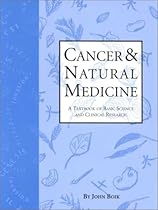 Induction of Differentiation
Studies of the effects of the isoflavones genistein and daidzein on differentiation are summarized in Table 14.5.
14.7 LIGNANS
Lignans are alcohols that derive from the same bio-synthetic pathway as lignins and, indeed, may be intermediates in the biosynthesis of lignins. Lignins are a group of polysaccharides that combine with cellulose to form the cell walls of plants. A number of lignans exhibit cytotoxic or antiviral activity. For example, podo-phyllotoxin is a cytotoxic lignan occurring in the Podophyllum species. Induction of Differentiation
Studies of the effects of the isoflavones genistein and daidzein on differentiation are summarized in Table 14.5.
14.7 LIGNANS
Lignans are alcohols that derive from the same bio-synthetic pathway as lignins and, indeed, may be intermediates in the biosynthesis of lignins. Lignins are a group of polysaccharides that combine with cellulose to form the cell walls of plants. A number of lignans exhibit cytotoxic or antiviral activity. For example, podo-phyllotoxin is a cytotoxic lignan occurring in the Podophyllum species. |
Thomas Bartram
See book keywords and concepts |
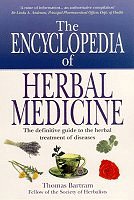 Constituents: isoflavones, triterpenes, essential oil.
Action: demulcent, expectorant, anti-diarrhoeal. The fresh root is laxative and diuretic; stimulates elimination of excess fluid. Uses. Irritable bowel, summer diarrhoea in children. To loosen phlegm in stubborn cases of respiratory congestion. Sore throat. Coughs. Preparation. Rhizomes are ground into a flour for internal use; quarter-1 gram in cup of boiling water: infuse 15 minutes. Dose: half a cup thrice daily. Powder is used as a tooth powder or natural face powder. Small segment sucked by a child in place of a dummy. Constituents: isoflavones, triterpenes, essential oil.
Action: demulcent, expectorant, anti-diarrhoeal. The fresh root is laxative and diuretic; stimulates elimination of excess fluid. Uses. Irritable bowel, summer diarrhoea in children. To loosen phlegm in stubborn cases of respiratory congestion. Sore throat. Coughs. Preparation. Rhizomes are ground into a flour for internal use; quarter-1 gram in cup of boiling water: infuse 15 minutes. Dose: half a cup thrice daily. Powder is used as a tooth powder or natural face powder. Small segment sucked by a child in place of a dummy. |
| Constituents: flavonoids, isoflavones, resins, coumarins, minerals, vitamins. Action: deobstruent, antispasmodic, alterative, sedative, expectorant. Mild stimulating and relaxing alterative with affinity for throat and salivary glands. (Priest) Anti-inflammatory. Reputed antineoplastic for reduction of tumours and hard swellings, especially of ovaries and breast. Has a long traditional reputation as a drink for cleansing the lymphatic vessels through which cancer is believed to spread. |












